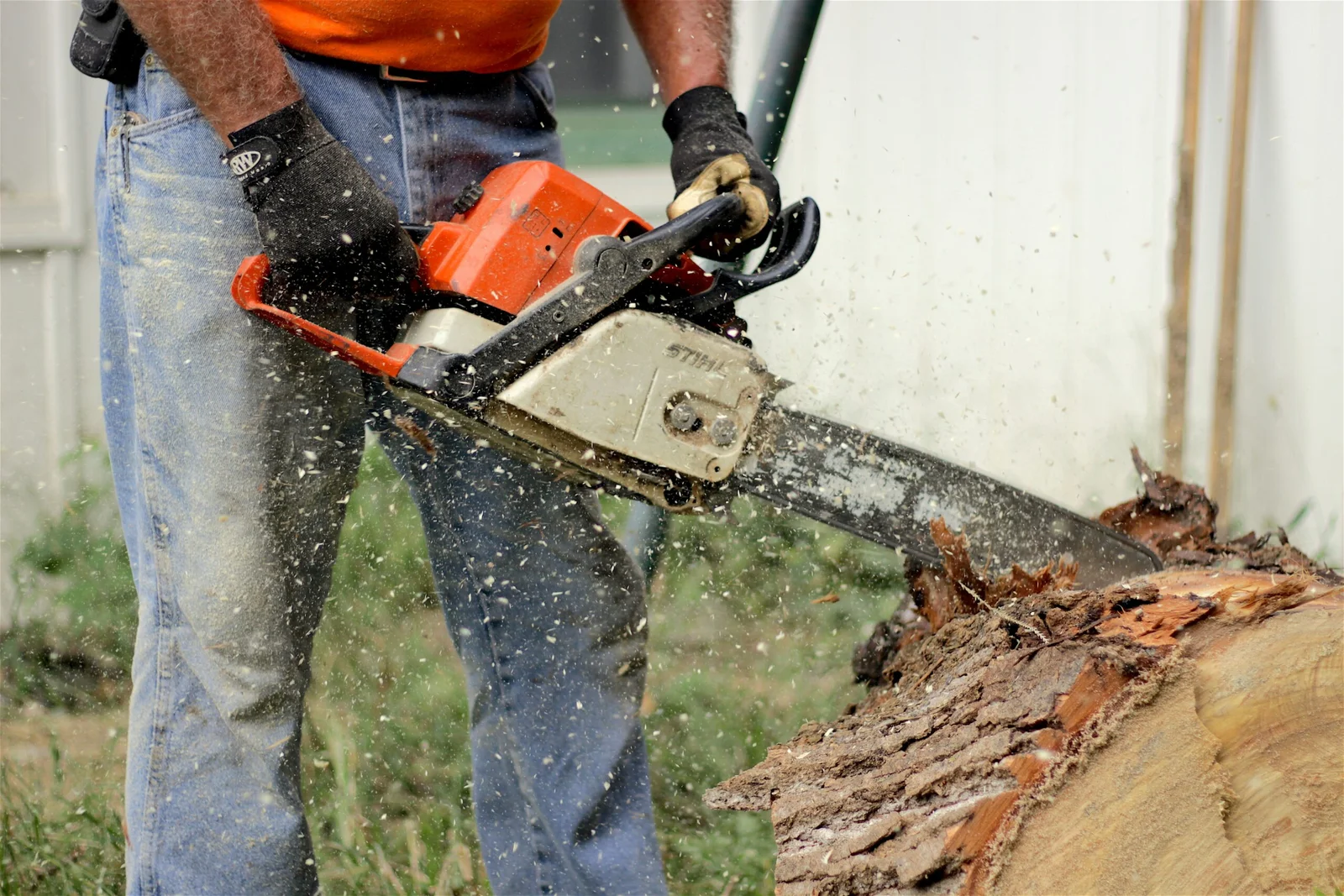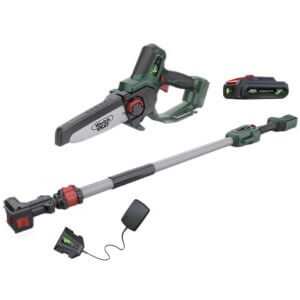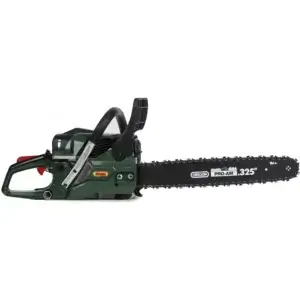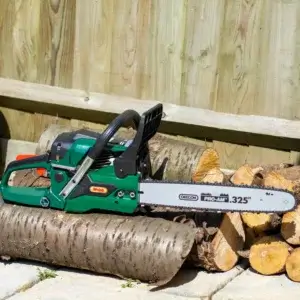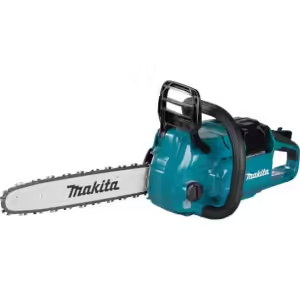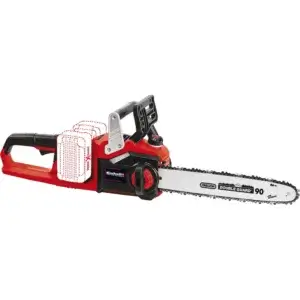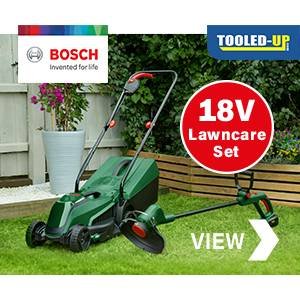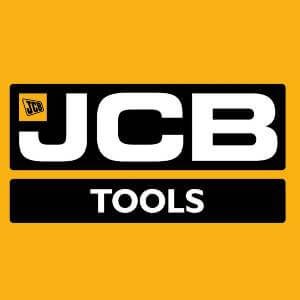Maximising fuel efficiency in petrol chainsaws is essential for both saving money and getting the job done effectively. Did you know that proper maintenance and the right techniques can significantly reduce fuel consumption? In this article, readers will learn how to maintain their chainsaw regularly, use the correct fuel mixture and keep the chain sharp for optimal performance. By addressing common issues such as inefficient fuel use and excessive wear, readers will discover practical solutions to improve their petrol chainsaw’s efficiency while working with wood.
Key Takeaways
- Regular maintenance improves fuel efficiency and performance in petrol chainsaws
- Keeping air filters clean ensures optimal airflow for better engine combustion
- Lubrication of moving parts reduces friction and extends the lifespan of the chainsaw
- Proper fuel mixture and high-quality petrol optimise performance and minimise unnecessary fuel consumption
- Regular inspections of components prevent costly repairs and enhance overall reliability
Maintain Your Chainsaw Regularly for Optimal Performance

Regular maintenance of a chainsaw significantly impacts fuel efficiency and performance. Clean or replace air filters to ensure optimal airflow, which aids in better combustion. Inspecting and maintaining the spark plug is vital, as it directly affects ignition. Additionally, lubricating moving parts reduces friction, while checking for loose or damaged components ensures reliability. Scheduling routine professional servicing keeps the chainsaw in peak condition, ultimately enhancing fuel efficiency and reducing unnecessary consumption.
Clean or Replace Air Filters to Improve Airflow
Cleaning or replacing air filters is essential for improving airflow in petrol chainsaws. A clean air filter ensures that the engine receives the right amount of air for optimal combustion. When the air filter is clogged, it can restrict airflow, leading to reduced performance and increased fuel consumption—effectively sending more money down the drain in unnecessary costs.
A well-maintained air filter also helps maintain proper pressure in the fuel system. This is particularly important for chainsaws that rely on precise fuel delivery from the tank to the engine. When the air filter is compromised, it may cause the fuel pump to work harder, potentially leading to increased wear and tear and higher overall maintenance costs in the long run.
Routine checks of the air filter should become a standard part of any chainsaw maintenance schedule. Depending on usage, cleaning or replacing the filter is a straightforward task that can be easily completed. Ensuring that the air filter remains clear not only enhances the chainsaw’s efficiency but also extends its lifespan, making it a wise investment for all users looking to maximise performance and fuel efficiency.
Inspect and Maintain the Spark Plug
Inspecting and maintaining the spark plug is crucial for the efficient operation of a petrol chainsaw. A worn or dirty spark plug can lead to difficulties with starting or irregular idle speeds, which could impact overall performance when cutting firewood. Regular checks ensure that the spark plug delivers a strong spark, increasing fuel efficiency and allowing the engine to consume less fuel per gallon during operation.
Replacing a faulty spark plug not only improves ignition but also contributes to a smoother operation of the drivetrain. Chainsaws use a combination of power and precision, and a well-functioning spark plug plays a pivotal role in ensuring that the chainsaw runs optimally. This reliability is particularly important for users who regularly depend on their chainsaw for tasks like trimming, pruning, or cutting firewood.
To maintain a spark plug, users should clean it regularly, checking for wear and damage. A simple inspection can reveal if the spark plug needs replacement, thereby preventing potential performance issues. By prioritising spark plug maintenance, chainsaw users can maximise efficiency while minimising downtime and unnecessary fuel consumption:
| Action | Benefit |
|---|---|
| Regular Spark Plug Inspection | Ensures reliable ignition and optimal performance |
| Cleaning Spark Plug | Enhances fuel efficiency and prolongs engine life |
| Replacing Worn Spark Plugs | Avoids irregular idling and performance drops |
Lubricate Moving Parts to Reduce Friction
Lubricating moving parts in a petrol chainsaw is vital for reducing friction and ensuring peak performance. When parts move smoothly, the machine operates more efficiently, saving fuel and extending the lifespan of the equipment. Regular lubrication also helps maintain the optimal sound pressure levels needed for comfort during prolonged use, making the task less strenuous for users like arborists who depend on their tools for daily work.
Using high-quality lubricant products, such as those available from Oregon, can significantly enhance the operational efficiency of a chainsaw. These lubricants are designed to withstand high temperatures and pressures that occur during use, providing effective protection to the internal components. By keeping all moving parts well-lubricated, users can prevent wear and tear that might lead to expensive repairs or replacements.
Regular checks and maintenance of the air filter should include ensuring that the lubrication system is functioning correctly. If moving parts do not have sufficient lubrication, it can hinder performance and lead to increased fuel consumption. An effective maintenance schedule should integrate lubrication tasks to keep the chainsaw running smoothly:
| Action | Benefit |
|---|---|
| Regular Lubrication of Moving Parts | Reduces friction and enhances fuel efficiency |
| Using High-Quality Lubricants | Protects internal components and prolongs equipment life |
| Checking Lubrication Levels | Maintains optimal performance and reduces repair costs |
Check for Loose or Damaged Components
Regularly checking for loose or damaged components in a petrol chainsaw is essential for maintaining optimal engine performance. Loose parts can lead to decreased sound power and noticeable vibrations, which may affect the overall horsepower of the tool. Addressing these issues promptly not only enhances safety but also prevents further damage that could result in costly repairs.
In particular, the crankshaft must be inspected for any signs of wear or loosening, as it plays a crucial role in the engine’s operation. A compromised crankshaft can lead to inefficiencies; therefore, maintaining its integrity is vital for achieving maximum fuel efficiency. Additionally, any loose screws, nuts, or bolts should be tightened to ensure components are securely fastened, contributing to a smoother running machine.
Users should develop a routine inspection schedule to catch potential issues before they escalate. For instance, a simple practice of checking all visible parts for movement or wear can save time and money in the long run. The following tasks can help maintain chainsaw reliability and fuel efficiency:
- Inspect the crankshaft for any signs of wear or damage.
- Tighten loose screws and bolts regularly.
- Look for any abnormal sounds during operation that may indicate issues.
Schedule Routine Professional Servicing
Scheduling routine professional servicing is essential for maintaining a petrol chainsaw’s performance and ensuring optimal fuel efficiency. Experts recommend a thorough assessment of critical components such as the carburetor, spark plug, and oil system to keep the chainsaw running smoothly. Regular check-ups can identify issues early, preventing costly repairs and ensuring that the machine operates at maximum power.
A professional service can include cleaning or adjusting the carburetor, which directly impacts the air-fuel mixture and can improve performance. Not only does this enhance cutting efficiency, but it also lowers fuel consumption, allowing users to get the most out of each tank. Additionally, ensuring the correct sound levels during operation through proper servicing can reveal underlying issues that might otherwise go unnoticed.
Investing in professional servicing also guarantees that lubrication systems are functioning correctly, reducing friction and extending the lifespan of the chainsaw. Users should look for reputable service providers who understand the intricacies of chainsaws and can offer tailored maintenance that meets their specific needs. Overall, regular professional servicing is a vital step towards maximising fuel efficiency and safeguarding the longevity of the equipment:
- Assess the carburetor to ensure optimal air-fuel mixture.
- Check and replace the spark plug as needed.
- Inspect the oil system for proper lubrication.
- Monitor sound levels to identify potential problems.
Use the Correct Fuel Mixture and Quality Materials

The correct fuel mixture and quality materials are critical for ensuring a petrol chainsaw operates efficiently. Accurately measuring the fuel-to-oil ratio can enhance torque and reduce vibration, while selecting high-quality petrol and two-stroke oil plays a significant role in performance. Avoiding stale or contaminated fuel, storing petrol properly, and mixing in small batches will preserve freshness and optimise performance. Each of these factors impacts the effectiveness of the oil pump and overall machine reliability.
Measure the Fuel-to-Oil Ratio Accurately
Accurate measurement of the fuel-to-oil ratio is critical for optimal performance in petrol chainsaws. Typically, a 50:1 mixture is recommended, which means using 2.5 ounces of two-stroke oil for every gallon of petrol. A common mistake is to pour oil without measuring, leading to either an overly rich or lean mixture that can harm the engine’s efficiency.
To ensure precision, using a measuring screw or a specific fuel mixing container can greatly assist in achieving the right ratio. For instance, when mixing smaller quantities, a pint of petrol would require approximately 0.5 ounces of oil. This attention to detail not only helps in maximising fuel efficiency but also contributes to the longevity of the chainsaw.
Always opting for high-quality two-stroke oil that meets manufacturer specifications will further enhance operational efficiency. Mixing fuel in small batches can prevent the use of stale fuel, ensuring that the chainsaw runs smoothly during operation. By taking these steps, users can effectively minimise unnecessary fuel consumption and enjoy an optimised cutting experience.
Select High-Quality Petrol and Two-Stroke Oil
Selecting high-quality petrol and two-stroke oil is essential for enhancing the performance and fuel efficiency of petrol chainsaws. Using reputable brands that meet the manufacturer’s specifications helps ensure the engine runs smoothly and reduces the risk of damaging components. Low-quality fuels can lead to residue build-up in the engine, causing inefficiencies and potentially costly repairs.
High-quality petrol not only burns cleaner but also provides the proper octane level needed for optimal combustion. This can lead to more power from the engine and reduced emissions, benefiting both the user and the environment. When choosing two-stroke oil, selecting the right formulation is critical, as a good oil can significantly improve lubrication, reduce wear, and keep the engine running cooler.
For best results, users should follow the manufacturer’s guidelines on fuel and oil selection while also ensuring they use fresh fuel to avoid the pitfalls of stale petrol. This attention to detail can vastly improve not just fuel efficiency but also the longevity of the chainsaw:
- Choose reputable petrol brands that meet specifications.
- Opt for high-quality two-stroke oil for better lubrication.
- Use fresh fuel to prevent engine issues and maintain efficiency.
Avoid Using Stale or Contaminated Fuel
Avoiding stale or contaminated fuel is essential for maintaining the performance of petrol chainsaws. Using old fuel can lead to engine problems, as it may lose its effectiveness over time, resulting in a suboptimal mixture that impacts combustion. Additionally, contaminated fuel can introduce impurities into the engine system, potentially causing clogs and reducing overall efficiency.
Gardeners and chainsaw users should ensure that they store petrol properly to maintain its freshness. It is advisable to use fuel within 30 days, and mixing only small amounts of oil and petrol can help in avoiding waste. By doing so, operators can prevent the challenges associated with stale fuel, including hard starts or erratic idling, which can frustrate users during critical cutting tasks.
Regularly checking the fuel before use can save time and resources. If fuel smells off or shows signs of separation, it is best to discard it. Taking these precautions helps ensure that the petrol chainsaw runs smoothly, maximising performance and fuel efficiency while minimising repair costs associated with using poor-quality fuel:
| Fuel Type | Impact on Performance |
|---|---|
| Fresh Fuel | Ensures optimal combustion and efficiency |
| Stale Fuel | Leads to difficult starts and reduced engine power |
| Contaminated Fuel | Causes clogs and potential engine damage |
Store Fuel Properly to Preserve Freshness
Proper storage of fuel is essential for maintaining the freshness and effectiveness of the fuel used in petrol chainsaws. Fuels can degrade over time, leading to difficulties in starting and poor engine performance. To avoid such issues, users should store petrol in a cool, dry place, away from direct sunlight, and preferably in approved fuel containers designed to minimise evaporation and contamination.
Using fuel stabilisers can further enhance the longevity of stored petrol. These additives help prevent oxidation and keep the fuel fresh for longer periods. By incorporating stabilisers, chainsaw operators can ensure their fuel remains suitable for use, allowing for smoother operations when it’s time to cut.
Regularly checking the stored fuel’s condition is another crucial step. If the fuel exhibits a strange smell, separation, or unusual colour, it is advisable to dispose of it properly. Taking these proactive measures helps users avoid the pitfalls of stale fuel, ensuring that their petrol chainsaws operate at peak efficiency when needed most.
Mix Fuel in Small Batches for Optimal Performance
Mixing fuel in small batches is a practical strategy for ensuring petrol chainsaws operate at their best. This method not only helps maintain freshness but also prevents the fuel from degrading over time. By preparing only what is needed for a specific project, users can avoid the pitfalls associated with stale petrol that often lead to starting issues and reduced engine performance.
When preparing fuel, it’s beneficial to use exact measurements of petrol and two-stroke oil. For instance, a commonly recommended ratio is 50:1, meaning 2.5 oz of oil for every gallon of petrol. Adhering to this guideline maximises efficiency, ensuring the chainsaw runs smoothly without unnecessary fuel waste.
In addition to proper measurements, storing and mixing fuel in approved containers further enhances performance. These containers help minimise evaporation and contamination, safeguarding the mixture’s integrity. By consistently mixing fuel in small batches and paying attention to storage conditions, chainsaw users can effectively ensure that their equipment functions optimally:
- Prepare the right fuel-to-oil ratio for efficiency.
- Mix small quantities to keep fuel fresh.
- Use approved containers to avoid contamination.
Keep the Chain Sharp and Properly Tensioned

Keeping the chain sharp and properly tensioned is crucial for maximising fuel efficiency in petrol chainsaws. Regularly sharpening the chain ensures efficient cutting, while adjusting the chain tension before each use optimises performance. Promptly replacing worn or damaged chains maintains effectiveness, and using the appropriate chain for specific tasks contributes to smooth operation. Additionally, maintaining the guide bar is essential for reliable functioning. This section will explore these key practices in detail, providing valuable insights for chainsaw users.
Sharpen the Chain Regularly for Efficient Cutting
Regularly sharpening the chain of a petrol chainsaw is essential for achieving efficient cutting and maximising fuel efficiency. A sharp chain bites into the wood more effectively, requiring less effort from the engine. This reduction in strain not only conserves fuel but also extends the life of the equipment by minimising wear on the engine components.
Hands-on experience in the field highlights that an adequately sharpened chain allows for cleaner cuts, which reduces time spent on each task. When operators spend less time cutting, they consume less fuel overall. This is particularly beneficial during prolonged use, where each small improvement in efficiency can translate to significant savings during the project.
To maintain optimal performance, operators should adopt a routine of checking the chain’s sharpness before starting any job. Using a quality chainsaw file or sharpening tool can make this process straightforward. By prioritising this maintenance task, chainsaw users can enhance their cutting performance while ensuring that their fuel consumption remains low, ultimately making the work more efficient and cost-effective.
Adjust Chain Tension Before Each Use
Adjusting chain tension before each use is a critical step in ensuring that a petrol chainsaw operates efficiently. Proper tension allows the chain to make optimal contact with the guide bar, which facilitates smoother cutting and reduces the strain on the engine. If the chain is too loose, it can derail during operation, posing safety risks and causing unnecessary downtime.
Regular checks should be integrated into the operator’s routine before starting any cutting task. A well-tensioned chain should snap back into place when pulled lightly by hand but not so tight that it impedes movement. This balance improves fuel efficiency, as a properly tensioned chain allows the engine to use energy more effectively, thereby reducing fuel consumption.
In addition to safety and efficiency, regular chain tension adjustments can prolong the lifespan of both the chain and the guide bar. Users should develop a consistent practice of checking tension before every use, as this simple action can significantly improve overall performance and reduce the likelihood of costly repairs:
| Action | Benefit |
|---|---|
| Adjust Chain Tension | Promotes safer operation and optimal cutting |
| Check Tension Regularly | Enhances fuel efficiency and engine performance |
| Maintain Proper Chain Movement | Prolongs the lifespan of the chain and guide bar |
Replace Worn or Damaged Chains Promptly
Replacing worn or damaged chains promptly is crucial for maintaining optimal fuel efficiency in petrol chainsaws. A chain that is past its prime can cause the engine to work harder, leading to increased fuel consumption. Keeping a close eye on the condition of the chain means users can avoid unnecessary strain on the engine, thus conserving fuel.
Users should regularly assess the chain for signs of wear, such as dullness or broken links. A damaged chain not only affects cutting performance but can also pose safety risks during operation. By replacing the chain when signs of wear are evident, operators ensure that the chainsaw functions smoothly and efficiently, optimising fuel use during tasks.
Choosing high-quality replacement chains is equally important for preserving performance. Quality chains improve cutting accuracy and efficiency, allowing the petrol chainsaw to perform at its best. Investing in reliable chains helps avoid frequent replacements, ultimately saving time and resources while enhancing overall fuel efficiency.
Use the Appropriate Chain for Your Tasks
Using the appropriate chain for specific tasks is essential for optimising the fuel efficiency of petrol chainsaws. Each chain type is designed for different cutting applications, such as felling trees, cross-cutting firewood, or milling lumber. Selecting the right chain reduces the workload on the engine, leading to lower fuel consumption and enhanced operational performance.
For instance, using a skipping chain, which has fewer teeth, can significantly improve cutting speed for large trees, while a full-chisel chain is better for precision cutting in softer woods. By choosing the suitable chain, operators can ensure smoother cuts and reduce the strain on the engine, ultimately conserving fuel during prolonged use. It is advisable for users to familiarise themselves with various chain types and their recommended applications to maximise efficiency.
Moreover, regularly assessing the task at hand allows users to switch chains as needed to maintain optimal fuel performance. Sticking to a single chain type for all activities may lead to unnecessary energy expenditure and increased wear on the equipment. By taking the time to select the right chain, chainsaw users can not only enhance their fuel efficiency but also prolong the lifespan of their tools, making their investment work harder for them.
Maintain the Guide Bar for Smooth Operation
Maintaining the guide bar of a petrol chainsaw is essential for ensuring a smooth and efficient cutting process. A well-kept guide bar enables the chain to move freely, which reduces strain on the engine during operation. Regular checks for wear or unevenness on the guide bar are necessary; if it is worn down or bent, it can impede the chain’s movement, leading to increased fuel consumption and reduced cutting performance.
Using a proper guide bar maintenance routine can make a significant difference in fuel efficiency. This includes cleaning the bar regularly to remove sawdust and debris and ensuring that the groove where the chain sits is clear. A clean guide bar allows the chain to run smoothly, decreasing the likelihood of binding or stalling, which can waste both fuel and time.
Operators should also pay attention to the lubrication system for the guide bar. Proper lubrication reduces friction, facilitating smoother operation. Ensuring that the bar oil is at the correct level and applying it before use will keep the guide bar functioning optimally, promoting longevity and enhancing overall fuel efficiency during cutting tasks.
Optimise Your Chainsaw Operating Techniques

To maximise fuel efficiency in petrol chainsaws, operators should employ effective techniques during use. Warming up the engine before heavy tasks, using full throttle only when necessary, and avoiding extended idling can all make a difference. Additionally, planning cuts to minimise engine running time and applying proper cutting methods help reduce strain, leading to improved fuel consumption and performance.
Warm Up the Engine Before Heavy Use
Warming up the engine of a petrol chainsaw before heavy use is an essential practice for optimising fuel efficiency. Allowing the engine to idle for a few minutes gets the oil circulating properly and ensures that the components are adequately lubricated. This not only improves performance during cutting tasks but also reduces wear and tear on the engine, ultimately enhancing its longevity and reliability.
Experience shows that chainsaw operators who make it a habit to warm up their equipment benefit from smoother operation and quicker response times. Addressing the issue of sluggish performance at the start can prevent unnecessary fuel consumption caused by labouring under colder engine conditions. A warm engine operates more efficiently, allowing users to utilise less fuel while achieving their cutting goals.
Furthermore, warming up the engine helps avoid potential safety hazards that may arise from abrupt starts during heavy use. Operators can maintain better control over their equipment, leading to a more precise cutting experience. By incorporating a warm-up routine, users not only maximise their chainsaw’s fuel efficiency but also ensure they are working safely and effectively throughout their tasks.
Use Full Throttle Only When Necessary
Using full throttle consistently during chainsaw operation can lead to excessive fuel consumption and unnecessary strain on the engine. Many operators make the mistake of running their equipment at maximum power for all tasks, not realising that reducing throttle can improve efficiency. By applying only the power necessary for the job, users can significantly lower fuel usage and prolong the equipment’s lifespan.
For example, when trimming branches or cutting through softer wood, a lower throttle setting can provide sufficient power while minimising fuel intake. Operators will notice that achieving cleaner cuts is easier with controlled speed, and their chainsaw will have a better chance of running smoothly. Understanding the appropriate throttle for various tasks is key to a more economical and effective operation.
Another effective strategy is to alternate between throttle settings based on the workload. When performing tougher cuts or working through larger logs, full throttle may be necessary temporarily; however, easing off the throttle once the wood is engaged conserves fuel. By being mindful of throttle usage, chainsaw operators can achieve impressive results while reducing costs associated with fuel and maintenance:
- Utilise lower throttle for lighter tasks.
- Adjust throttle based on the material being cut.
- Alternate between settings to optimise fuel economy.
Avoid Extended Idling to Conserve Fuel
Avoiding extended idling is crucial for conserving fuel while using petrol chainsaws. When the engine runs without engaging in work, it consumes unnecessary fuel, which can quickly add up over time. Chainsaw operators should be mindful of their idle time, as even a few minutes can lead to wastage, impacting overall efficiency and operating costs.
During work sessions, it is advisable to turn off the chainsaw between tasks. For instance, if taking a break after cutting a section of wood, switching off the engine can save valuable fuel. By doing so, users not only conserve fuel but also reduce wear on engine components, promoting a longer lifespan for their chainsaw.
Moreover, training oneself to plan cutting tasks in advance can minimise idle time. By grouping similar jobs, chainsaw operators can make the most of each run, reducing the need for extended operation while idle. This proactive approach to chainsaw management aids in achieving optimal fuel efficiency and maintaining effective performance during use.
Plan Cuts to Minimise Engine Running Time
Planning cuts efficiently is essential for minimising engine running time, which directly contributes to greater fuel efficiency in petrol chainsaws. By assessing the job beforehand, operators can determine the most effective sequence of cuts. This strategic approach reduces unnecessary idling and optimises performance during each session.
Operators benefit from grouping tasks together to avoid excessive engine use. For instance, if cutting firewood, preparing multiple logs at once allows the chainsaw to work continuously without frequent stops. This not only conserves fuel but also enhances overall productivity, making each run count toward the project’s completion.
Furthermore, being mindful of each cutting action plays a pivotal role in fuel conservation. Operators should avoid making excessively large cuts that require more power and time, as these tactics lead to increased fuel consumption. In this manner, proper planning of cuts ensures that every moment spent running the chainsaw is purposeful and efficient, ensuring optimal fuel performance:
| Planning Strategy | Benefit |
|---|---|
| Assess Task Requirements | Reduces unnecessary idling |
| Group Similar Tasks | Minimises engine running time |
| Make Smaller Cuts | Conserves fuel during operation |
Apply Proper Cutting Methods to Reduce Strain
Applying proper cutting methods is essential for maximising fuel efficiency in petrol chainsaws. Operators should focus on using smooth, steady motions rather than forcing the chain through the wood. This not only conserves fuel but also reduces wear on the engine, ensuring that every cut is both effective and efficient.
Another important technique involves angling the chainsaw correctly while cutting. Positioning the blade to allow the teeth to bite into the wood at the appropriate angle leads to quicker cuts with less strain on the engine. This targeted approach helps maintain optimal fuel efficiency, allowing users to complete their tasks with minimal fuel consumption.
Finally, it is beneficial for operators to avoid pushing the chainsaw too hard during cutting. Recognising when to let the tool do the work can significantly improve fuel efficiency. Taking the time to assess the cutting environment allows for adjustments that save fuel and enhance the overall cutting experience, resulting in a more productive outing for the user.
Adjust the Carburettor for Efficient Fuel Consumption

Understanding the carburettor settings and functions is essential for optimising fuel efficiency in petrol chainsaws. Operators should follow the manufacturer’s guidelines for adjustments, listen for engine performance indicators, and regularly inspect the system. If needed, seeking professional assistance will ensure proper tuning. These practices will lead to smoother operation and improved fuel consumption efficiency.
Understand Carburettor Settings and Functions
Understanding the carburettor settings and functions is essential for optimal fuel efficiency in petrol chainsaws. The carburettor is responsible for mixing air and fuel in the correct ratio, which allows your chainsaw engine to function effectively. If the settings are not adjusted correctly, chainsaw performance can suffer, leading to increased fuel consumption and diminishing cutting power.
Operators should consult the manufacturer’s manual to understand specific carburettor settings for their chainsaw model. This includes knowing how to adjust the idle speed, the low-speed mixture, and the high-speed mixture settings. For example, a poorly adjusted mixture can cause the engine to run rich or lean, impacting overall performance and efficiency.
Regularly inspecting the carburettor for cleanliness and proper operation is vital. A dirty or malfunctioning carburettor can lead to reduced power output and excessive fuel usage. By keeping the carburettor in top condition, users can enjoy smoother operation and maximise fuel savings during use:
| Carburettor Setting | Impact on Performance |
|---|---|
| Idle Speed Adjustment | Ensures smooth idling and responsive throttle |
| Low-Speed Mixture | Optimises fuel-air mix for low RPM efficiency |
| High-Speed Mixture | Increases power output and reduces fuel consumption |
Follow Manufacturer's Guidelines for Adjustment
Following the manufacturer’s guidelines for carburettor adjustment is essential for ensuring optimal fuel efficiency in petrol chainsaws. Each chainsaw model has specific settings designed to provide the best performance, and deviations can lead to issues such as increased fuel consumption or reduced cutting power. By consulting the user manual, operators can identify the precise mixtures and idle speeds required for their equipment.
In practice, adhering to these guidelines can prevent unnecessary wear on the engine components and enhance the overall lifespan of the chainsaw. For example, improper adjustment might cause the engine to run too rich, resulting in excessive fuel usage and a sooty spark plug. Maintaining the correct settings allows the chainsaw to operate smoothly while minimising fuel expense and reducing the frequency of repairs.
Professional servicing might be advisable if users feel uncertain about making these adjustments themselves. Experts can ensure that the carburettor is tuned correctly, addressing potential performance issues that could arise from incorrect settings. Ultimately, following manufacturer guidelines when adjusting the carburettor is a straightforward yet vital practice that significantly contributes to maximising fuel efficiency in petrol chainsaws.
Listen for Engine Performance Indicators
Listening for engine performance indicators is crucial when adjusting the carburettor of a petrol chainsaw. Changes in engine sound can signal whether the carburettor is functioning optimally or if adjustments are necessary. A smooth, consistent idle indicates that the engine is well-tuned, while sputtering or rough idling may suggest that the fuel-air mixture needs rebalancing for efficiency.
Moreover, operators should pay attention to how the chainsaw responds under load. If the engine hesitates or loses power during cutting tasks, it may be running too rich, consuming excessive fuel. Adjusting the carburettor to improve air intake can enhance performance, making cutting smoother and conserving fuel during operation.
Overall, actively monitoring engine performance through listening helps chainsaw users maintain fuel efficiency and prolong the life of their equipment. By recognising signs of poor performance and addressing them promptly, operators can ensure their carburettor settings contribute to optimal fuel consumption. Key actions to consider include:
- Check for a consistent engine idle.
- Observe engine behaviour when under load.
- Adjust carburettor settings based on engine sounds.
Seek Professional Assistance if Needed
Seeking professional assistance for carburettor adjustments in petrol chainsaws can significantly enhance fuel efficiency and overall performance. Professionals possess the expertise and specialised tools necessary to ensure that the carburettor is accurately tuned to the manufacturer’s specifications. This attention to detail can prevent issues such as excessive fuel consumption and performance inefficiencies that may arise from improper settings.
Additionally, many users may find it challenging to identify the appropriate adjustments needed for their specific chainsaw model. A skilled technician can diagnose problems effectively, providing tailored solutions that ensure optimal fuel-to-air ratios. By leveraging professional knowledge, operators can save time and avoid the frustration associated with trial-and-error attempts at adjustment.
Involving professionals not only guarantees precise tuning but also offers users peace of mind. With expert assistance, operators can avoid potential risks associated with poor carburettor performance, such as engine damage and costly repairs. Overall, engaging with a professional service is a proactive approach to maintaining fuel efficiency in petrol chainsaws while safeguarding the longevity and reliability of the equipment.
Regularly Inspect and Adjust as Necessary
Regular inspection of the carburettor is fundamental in maximising fuel efficiency in petrol chainsaws. Users should develop a habit of checking the settings to ensure they align with the manufacturer’s specifications. A properly adjusted carburettor can improve the fuel-air mixture, leading to better combustion and, ultimately, enhanced cutting performance.
During regular maintenance, operators should look for signs of carbon build-up or leaks within the carburettor, as these can significantly disrupt efficiency. Addressing issues like these early on helps prevent more serious problems in the engine. Additionally, it is beneficial to keep an ear on how the engine sounds when running; a smooth, consistent idle indicates that the carburettor is functioning well.
If users notice changes in performance such as rough idling or excess fuel consumption, it may be time to make adjustments. Following a routine inspection and adjusting as necessary allows for a chainsaw to maintain optimal performance. For those unfamiliar with carburettor adjustments, seeking guidance from a professional can ensure the equipment operates as intended without risking potential damage to the engine.
Store and Care for Your Chainsaw Properly

Proper storage and care of a petrol chainsaw are essential for maximising fuel efficiency and prolonging equipment lifespan. Users should empty the fuel tank before storage to prevent contamination, clean the chainsaw after each use to maintain performance, and protect it from moisture and dust during idle periods. Additionally, inspecting and replacing fuel lines periodically, along with utilising protective cases or covers, ensures optimal function and safeguarding against wear.
Empty the Fuel Tank Before Storage
Emptying the fuel tank before storing a petrol chainsaw is a crucial step in preserving both the equipment and its fuel efficiency. Stale fuel can cause various issues, including clogging the fuel lines and carburettor, leading to poor performance when the chainsaw is needed again. By ensuring the tank is empty, operators can prevent these complications, allowing the chainsaw to operate optimally when it is next used.
Furthermore, using up the remaining fuel before storage helps avoid potential contamination that can arise from fuel sitting unused for extended periods. This practice reduces the risk of varnish formation and sediment build-up that can negatively impact the engine. Ideally, operators should run the chainsaw until it stalls from lack of fuel, ensuring that no remnants are left in the tank, which helps maintain the equipment’s reliability over time.
Finally, when emptying the fuel tank, it’s advisable to use this opportunity to clean the chainsaw and inspect other components as well. Clearing out any debris and ensuring that all parts are in good condition contributes to the overall maintenance routine, enhancing long-term performance. Regular attention during storage not only maximises fuel efficiency but also extends the life of the chainsaw, making it a wise investment for all users.
Clean the Chainsaw After Each Use
Cleaning the chainsaw after each use is an essential practice to maintain peak performance and fuel efficiency. When chainsaws are exposed to sawdust, resin, and debris, these materials can accumulate, affecting the operation and increasing fuel consumption. By taking the time to wipe down the exterior and clean the chain and guide bar, operators can prevent build-up that could lead to costly repairs and further maintenance issues.
A straightforward cleaning routine can significantly enhance a chainsaw’s longevity. Operators should not overlook areas such as the air filter and cooling fins, which can become clogged and hinder airflow. Keeping these components clean ensures that the engine operates at optimal levels, leading to better fuel combustion and efficiency during cutting tasks.
Additionally, a well-maintained chainsaw is safer to use. Any residue left on the chainsaw can create slipping or binding during operation, increasing the risk of accidents. Regular cleaning helps to identify any wear or damage to parts early, ensuring that the equipment remains reliable and ready for use when needed. Prioritising cleaning contributes to overall performance, ultimately maximising fuel efficiency in petrol chainsaws.
Protect From Moisture and Dust During Storage
Protecting a petrol chainsaw from moisture and dust during storage is crucial for its longevity and fuel efficiency. Moisture can cause rust and corrosion, particularly on internal components like the carburettor and fuel lines. By storing the chainsaw in a dry location, users can help prevent these issues and ensure the engine starts smoothly when needed.
Covering the chainsaw with a protective case or tarp can effectively shield it from dust and environmental factors. Regular cleaning before storage, including removing sawdust and dirt, also enhances the chainsaw’s performance by preventing accumulations that can interfere with engine operation. Ensuring that the chainsaw is clean and protected keeps it ready for efficient use whenever the operator is prepared to tackle cutting tasks.
Additionally, using fuel stabilisers can help mitigate the effects of moisture in the fuel tank. When a chainsaw is idle, the fuel can attract humidity, which can lead to problems like water build-up in the fuel system. Storing the chainsaw properly and using quality stabilisers ensures optimal performance and maximises fuel efficiency over time, making each cut as effective as possible.
Inspect and Replace Fuel Lines Periodically
Inspecting and replacing fuel lines periodically is an essential task for maintaining the performance and fuel efficiency of petrol chainsaws. Fuel lines can deteriorate over time due to heat, exposure to fuel, and environmental factors, which can lead to leaks. Regular checks for cracks or signs of wear can prevent fuel loss, ensuring that the engine runs smoothly and effectively consumes less fuel during operation.
If leaks are detected in the fuel lines, replacing them promptly is crucial for optimising fuel efficiency. A compromised fuel line can not only result in wasted petrol but also diminish overall operational safety. Users should consider replacing old or damaged fuel lines with high-quality materials that resist deterioration, contributing to a more reliable and fuel-efficient chainsaw.
Periodically inspecting fuel lines is a vital step in the overall care routine for a chainsaw. This simple practice can help identify potential issues before they escalate into severe problems, preserving the integrity of the engine and keeping costs down. Integrating this into regular maintenance visits ensures that the chainsaw functions effectively and maximises fuel efficiency when in use:
- Check fuel lines for cracks or wear regularly.
- Replace damaged fuel lines promptly to prevent leaks.
- Use high-quality materials for replacements to ensure reliability.
Use Protective Cases or Covers
Using protective cases or covers is essential for safeguarding a petrol chainsaw when not in use. Such coverings help prevent dust, moisture, and debris accumulation, which can lead to performance issues and increased fuel consumption. By considering the investment in a quality case, operators can significantly reduce the likelihood of requiring costly repairs due to environmental damage.
Beyond simply protecting the chainsaw, these cases can also keep vital components safe from potential damage during transport. For example, transporting a chainsaw without proper protection may result in scratches, dents, or damage to the chain and guide bar, which could affect cutting efficiency. A well-fitted cover ensures that the machine remains intact and functional, thus promoting better fuel efficiency when the chainsaw is needed for work.
Furthermore, using protective covers promotes a cleaner working environment by minimising the chances of spills or leaks from fuel or oil during storage. Gardeners and chainsaw users often face potential safety hazards from spilling substances that can attract unwanted insects or create slippery conditions. Maintaining a tidy workspace by using protective cases showcases professionalism and responsibility while maximising the lifespan and efficiency of the equipment:
| Benefits of Using Protective Cases or Covers | Impact on Fuel Efficiency |
|---|---|
| Prevents dust and moisture accumulation | Reduces risk of performance issues |
| Protects components during transport | Enhances cutting efficiency |
| Minimises spills and leaks | Keeps workspace tidy and safe |
Conclusion
Maximising fuel efficiency in petrol chainsaws is essential for both performance and cost-effectiveness. Regular maintenance, proper fuel mixing, and the use of high-quality materials play a crucial role in optimising operation and extending equipment lifespan. By implementing these tips, users can significantly reduce unnecessary fuel consumption and enhance their overall cutting experience. Taking these proactive measures translates into savings, safety, and reliable results every time a chainsaw is put to work.
-

Webb WEV20PS 20v Cordless Pruning Saw 150mm
£124.95 Buy Now -

Webb WEV20EXTPS 20v Cordless Pruning Saw 150mm with Extension Pole
£124.95 Buy Now -

Webb WEPCS18 Petrol Chainsaw 460mm
£169.95 Buy Now -

Webb WEPCS16 Petrol Chainsaw 400mm
£149.00 Buy Now -

Webb WEECS402200 Electric Chainsaw 400mm
£99.95 Buy Now -

Stanley FatMax V20 18v Cordless Chainsaw 300mm SFMCCS630 SFMCCS630
£149.95 Buy Now -

Sealey CP40VCS Twin 20v Cordless Chainsaw 350mm
£138.95 Buy Now -

Sealey CP20VCHS 20v Cordless Chainsaw 250mm
£105.95 Buy Now -

Makita UC025G 40v Max XGT Cordless Brushless Chainsaw 350mm
£343.95 Buy Now -

Draper GCS1800D Chainsaw 350mm
£117.95 Buy Now -

Bosch ADVANCEDCHAIN 36V-35 36v Cordless Chainsaw 350mm
£307.95 Buy Now -

Einhell Professional GE-LC 36/35 Li 36v Cordless Brushless Chainsaw 350mm
£149.99 Buy Now
Chainsaw Buying Guide Articles
- Essential Chainsaw Buying Guide for New Homeowners
- How to Select the Perfect Pole Chainsaw for Trimming High Branches
- Unlocking the Benefits of Corded Electric Chainsaws
- Choosing the Right Chainsaw: Professional vs Consumer Models Comparison – Buying a Chainsaw Q&As
- Chainsaw Brands Comparison: Discover Your Ideal Match
Chainsaw Maintenance Articles
- Solving Chainsaw Bar Oiling Issues: A Step-by-Step Guide
- Essential Chainsaw Maintenance Tips for Enhanced Durability and Performance
- How to Select the Best Chainsaw Bar Oil for Your Needs
- Comprehensive Chainsaw Maintenance Guide for Enhanced Safety
- Step-by-Step Guide to Changing Chainsaw Spark Plugs
- Choosing the Perfect Replacement Chains for Your Chainsaw
- Step-by-Step Guide on Replacing Chainsaw Spark Plugs
- How to Select the Best Chainsaw Bar Oil for Your Needs
- Selecting the Ideal Battery for Your Electric Chainsaw: A Comprehensive Guide
- Step-by-Step Guide to Cleaning Your Chainsaw Air Filter Effectively
Chainsaw Operation Techniques Articles
- Step-by-Step Guide to Changing Chainsaw Spark Plugs
- Choosing the Perfect Replacement Chains for Your Chainsaw
- Comprehensive Guide to Proper Chainsaw Handling and Safety
- How to Select the Perfect Chainsaw Bar and Guide for Your Needs
- Effective Solutions for Chainsaw Starting Issues
- Top Tips for Boosting Fuel Efficiency in Petrol Chainsaws
Chainsaw Repair Advice Articles
- Comprehensive Guide to Fixing Chainsaw Starting Issues
- Step-by-Step Guide on Replacing Chainsaw Spark Plugs
- How to Select the Best Chainsaw Bar Oil for Your Needs
- Step-by-Step Guide to Cleaning Your Chainsaw Air Filter Effectively
- How to Replace a Chainsaw Chain: Your Comprehensive Guide
- Effective Solutions for Chainsaw Starting Issues
Chainsaw Safety Tips Articles
- Essential Chainsaw Safety Features: A Comprehensive Guide for Buyers
- Stay Safe with Chainsaw Safety Gear Essentials: Your Guide
- Chainsaw Safety: Strategies to Avoid Tree Cutting Accidents
- Essential Chainsaw Techniques for Safely Managing Tree Limbs and Branches
- Chainsaw Safety and Handling: Mastering Proper Techniques
- Comprehensive Guide to Proper Chainsaw Handling and Safety
- Essential Winter Chainsaw Storage Tips to Protect Your Equipment
- Mastering Chainsaw Safety: A Guide to Preventing Kickback
- Comprehensive Guide to Essential Chainsaw Safety Gear
- Expert Tips on Chainsaw Kickback Prevention: A Safety Guide
Chainsaw Storage Articles
- The Essential Guide to Storing Your Chainsaw Safely
- How to Select the Best Chainsaw Storage Case or Bag for Your Needs
Electric vs Petrol / Gas Chainsaws Articles
- Durability Comparison: Gas Versus Electric Chainsaws
- How to Decide on Electric Versus Gas Chainsaws: A Detailed Guide
- Reducing Your Carbon Footprint With Electric Chainsaws
- Why Opting for a Battery Powered Chainsaw Is a Smart Choice
- Selecting the Ideal Battery for Your Electric Chainsaw: A Comprehensive Guide
- Durability Comparison: Gas Versus Electric Chainsaws
- Electric vs Gas/Petrol Chainsaws: A Detailed Comparison of Power Output
- Petrol vs Electric Chainsaws: Explore the Pros and Cons
Tree Cutting Techniques Articles
- Mastering Chainsaw Cutting Angles for Precision Tree Felling
- How to Select the Perfect Chainsaw for Your Tree Cutting Needs
- Essential Safety Tips for Cutting Large Trees Using a Chainsaw
- Essential Chainsaw Techniques for Safely Managing Tree Limbs and Branches
- Chainsaw Safety: Strategies to Avoid Tree Cutting Accidents
- Chainsaw Safety and Techniques for Efficient Tree Felling
Types of Chainsaws Articles
- Why Opting for a Battery Powered Chainsaw Is a Smart Choice
- Reducing Your Carbon Footprint With Electric Chainsaws
- Uncovering the Evolution: History of Chainsaws Explained
- Unlocking the Benefits of Corded Electric Chainsaws
- Comparing Electric and Petrol Chainsaws: Key Factors to Consider
- Affordable Chainsaws for Beginners: A Buyer’s Guide
Chainsaw Accessories Articles
Articles Coming Soon

